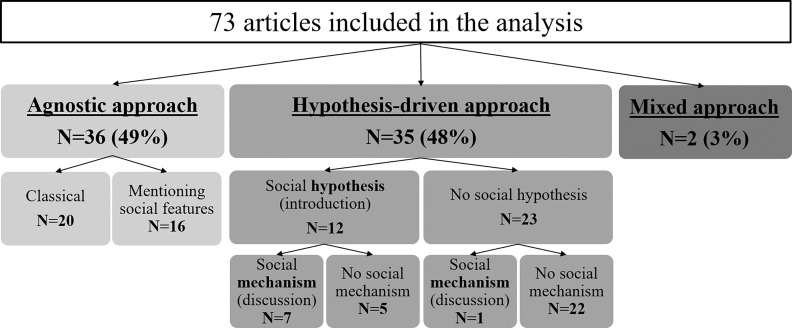Figure 2.
Social environment, a priori hypotheses and underlying mechanisms. Detailed table is available in Table S4. Note: Agnostic approach, data exploration with no predefined hypothesis of interest; hypothesis-driven approach, test of an explicit hypothesis about the relationship between exposure(s) and outcome(s).

